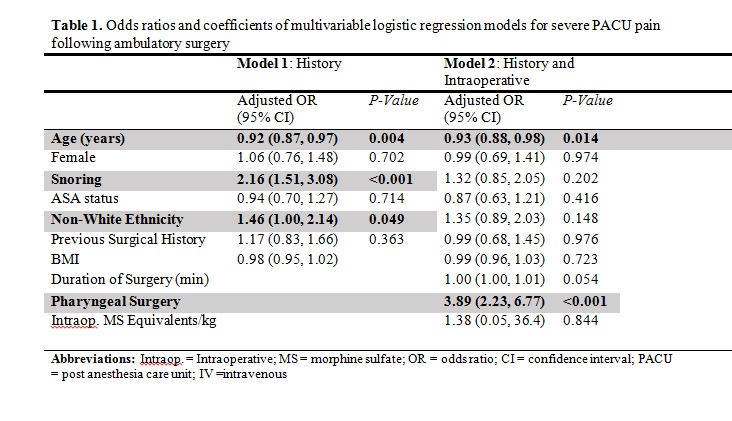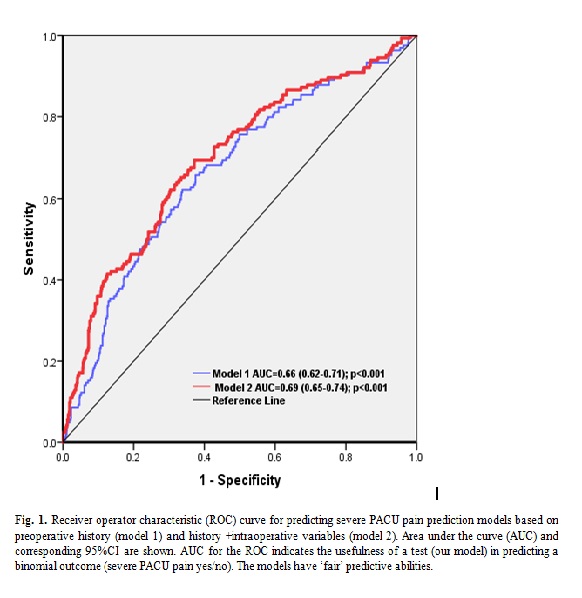NM-351
Prediction of Early Severe Postoperative Pain in Pediatric Ambulatory Surgical Patients
Goodly, md H, Nafiu, md, frca, ms O
Univeristy of Michigan, Ann Arbor, MI, USA
Introduction: Many children recover from severe postoperative pain (SPOP) within an hour of admission to the post-anesthesia care unit (PACU)1, but SPOP increases overall complication rates, hospital costs, prolongs PACU/hospital stay, and may be the first step to opioid addiction and chronic pain2,3. The prevailing opioid epidemic highlights the importance of preventing SPOP and careful characterization of its risk factors.
SPOP is influenced by a variety of largely unknown triggers in children. Early identification of risk factors for SPOP is highly desirable to guide appropriate intervention, thus reducing the burden of caring for children with SPOP in the PACU. We describe the incidence of SPOP following pediatric ambulatory surgery, and examine the factors associated with SPOP.
Methods: After IRB approval, we prospectively recruited children aged 4-17 years old undergoing painful, elective, ambulatory surgery into a cross-sectional observational study. Statistical comparisons between cases and controls were performed using Chi-squared or Student t-test as indicated. SPOP was defined as a pain score ≥7 during PACU admission. Two multivariable logistic regression models to determine possible predictors of SPOP were constructed based on preoperative history1 and history+intraoperative variables.
Results: 175/813 (21.2%) experienced at least one episode of SPOP during their PACU stay. Minimal differences were seen between patients with and without SPOP except that patients with SPOP were younger (8.35+/-4.1 vs. 9.38+/-4.2yr; p=0.01); more likely to be habitual snorers (42.3% vs. 24.3%; p<0.001), and less likely to have a past surgical history (60.3% vs. 69.3%; p=0.02). Among intraoperative variables, children with SPOP usually received intraoperative acetaminophen (p=0.001), morphine (p=0.001), and dexamethasone (p=0.003). On multivariable analysis (Table 1) only habitual snoring was retained as a significant predictor in the preoperative history model, and adding intraoperative variables only slightly improved the discriminant ability of the model (Fig 1).
Conclusion: Severe PACU pain is common in children undergoing ambulatory surgery. Prediction models using history and intraoperative variables demonstrated fair ability to identify children who would suffer SPOP, with pharyngeal surgery being high risk and warranting targeted preventive therapies. These models merit implementation and validation with further studies to assess their utility.
References: 1. Chung F, Ritchie E, Su J. Anesth Analg 1997;85:808–816. 2. Svensson I et.al Eur J Pain 2001;5:125–133.
Top













